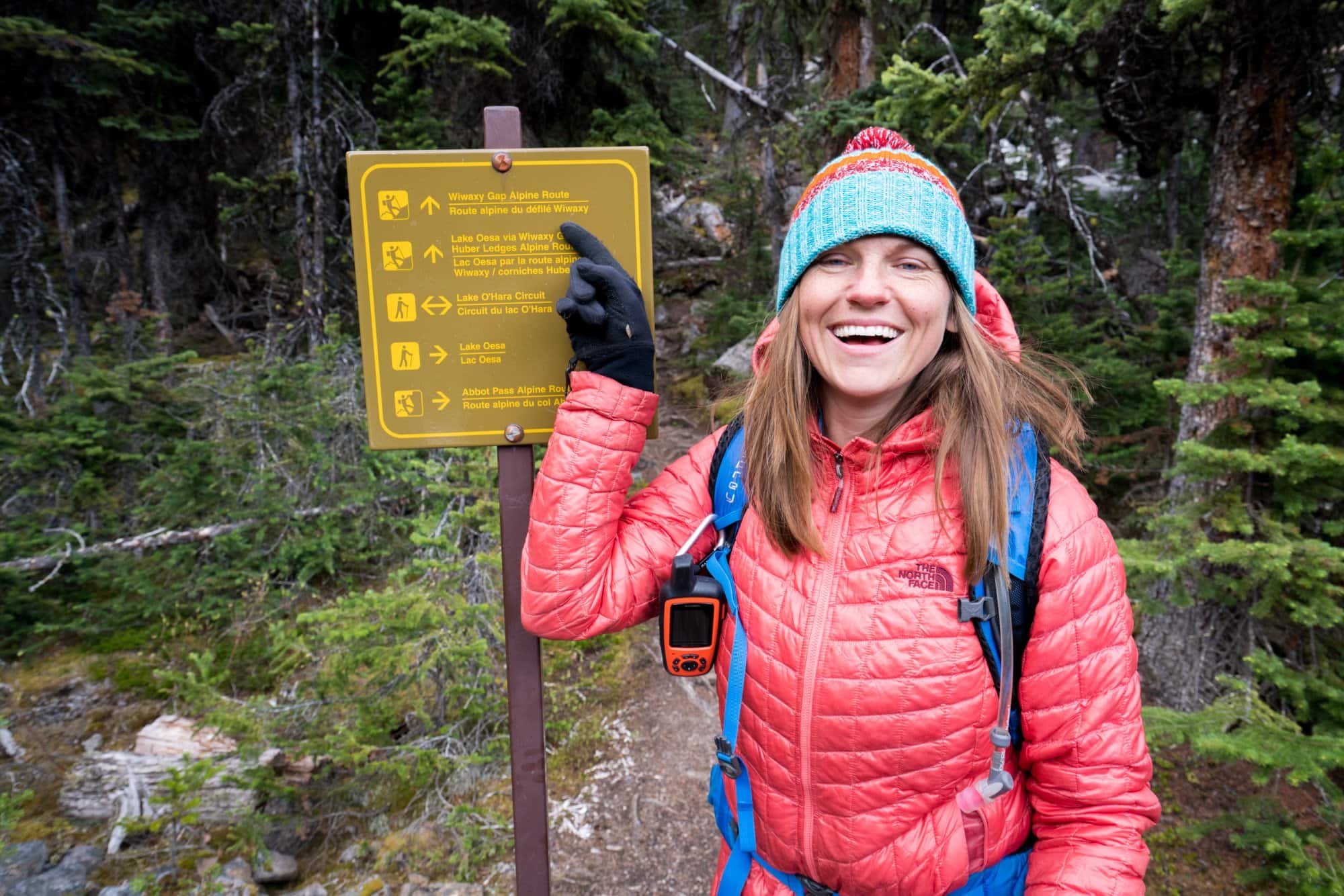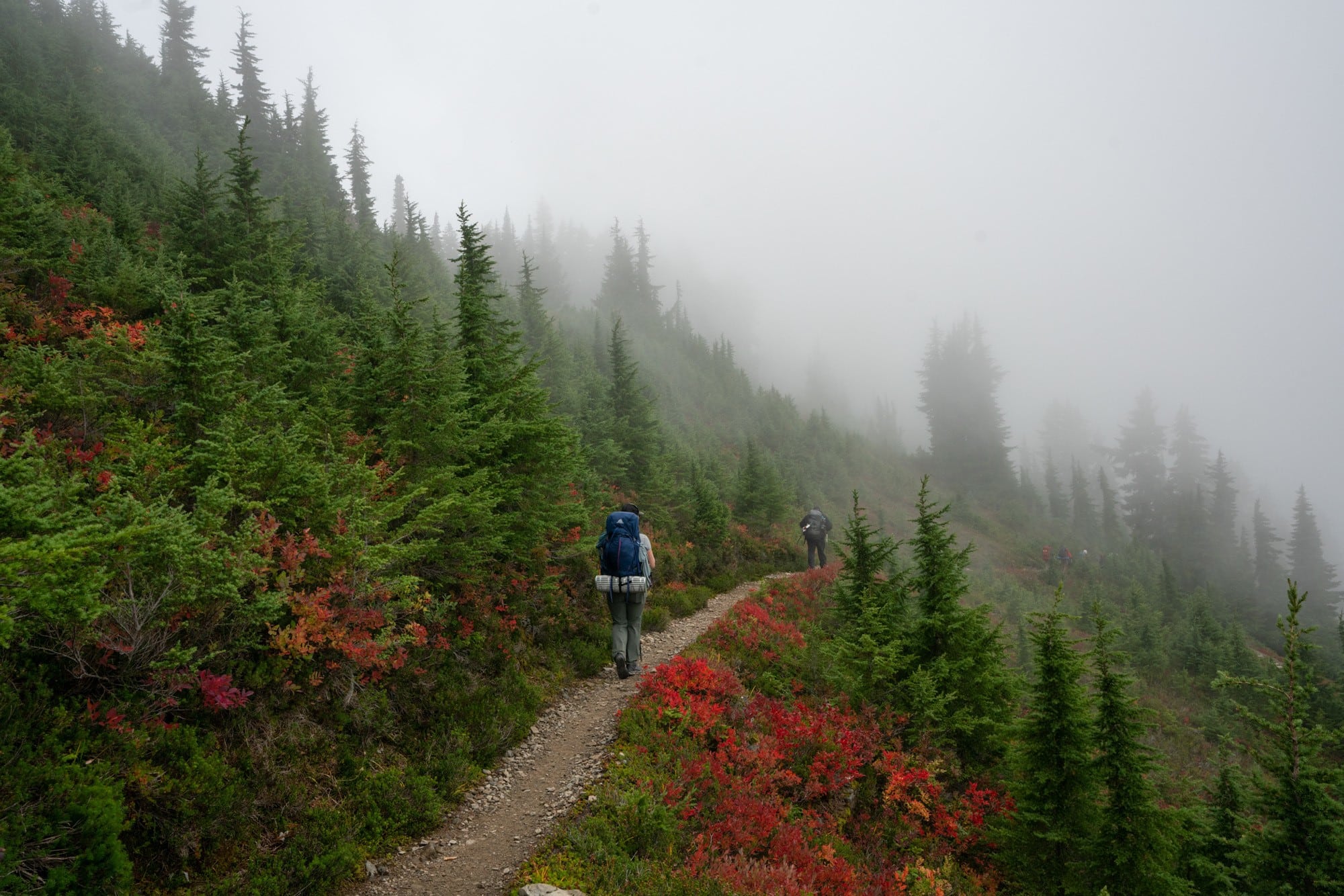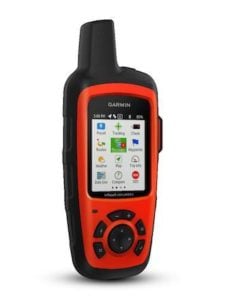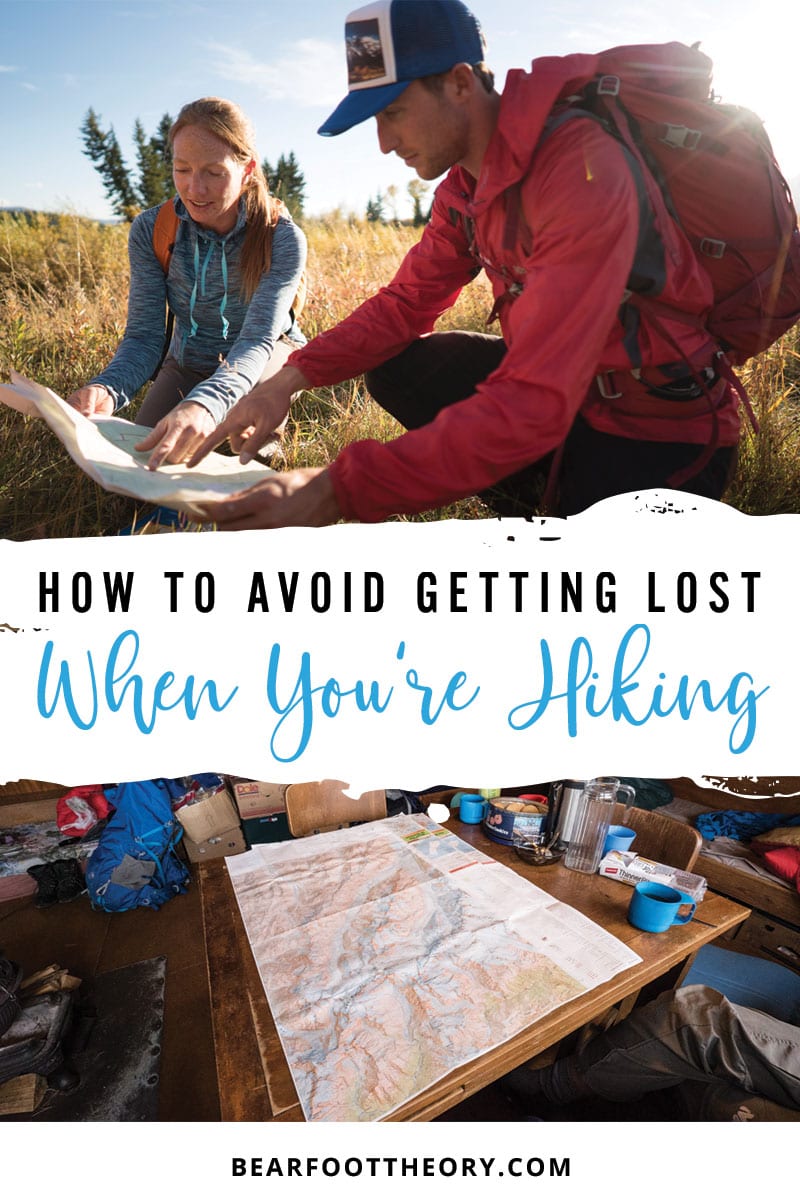How to Avoid Getting Lost While Hiking
It’s easy to avoid getting lost while hiking with the right set of tools and trail-smarts. Learn simple ways to not get lost in the woods with these tips.

Back in 2010, I was on an early season backpacking trip in California’s Desolation Wilderness with a couple of friends. The trail still had a lot of snow, making it very difficult to follow. It was before the days of iPhone apps, and I’m embarrassed to admit that we were very ill-prepared. We had a very basic trail map from my hiking book, and that was it. No compass, no GPS, and no extra supplies in case of an emergency. We somehow got off the trail and ended up getting seriously lost. It was only by luck that we stumbled back on the trail after 12 hours of searching for it and a number of unsuccessful phone calls.
On that backpacking trip I learned the importance of 1) having a good topo map and the right navigational tools and 2) knowing how to use them.
In this blog post, I share important tips and tools you can use to avoid getting lost while you’re hiking. With the right skill-set and gear, there is no reason you should ever get into a situation like I did.
Read on for our guide on how to avoid getting lost while hiking.
This post may contain affiliate links.
1) Develop Basic Trail-Smarts
Just like street-smarts, there are also trail-smarts for when you are out hiking, and part of being trail-smart is proper planning and preparation. Refer to this checklist of safety precautions the next time you head out.
- Always let someone know where and when you’re going and when you will return. This way, someone will be able to tell rescuers where to find you in case you do get lost. Some hikers like to leave a note on the dashboard of their car as an extra safety measure.
- Check the park’s website and weather report for updates before you go
- Sign in and out of all shelter and trail registers
- Bring more than enough food and water
- Carry a small first aid kit and check out these REI articles to learn the basics for how to control bleeding injuries & how to treat other minor injuries so you can hike out to safety
- Charge your phone before you hit the trail if you plan to use it for navigation and consider bringing an extra battery pack.
- Bring extra layers of clothing to keep warm and a headlamp for illumination
- You should always bring the ten essentials but especially in case of emergency
- Don’t forget a map, compass or handheld GPS as a backup.
- If you’re hiking alone make sure to check out our blog post on getting over your fears of solo hiking

Save this post!
Enter your email & I'll send this post to your inbox! You'll also receive my weekly newsletter full of helpful advice for planning your adventures.
2) Learn How to Read a Topo Map and Use A Compass
Here’s the truth: You cannot rely solely on cellphones in the outdoors; especially not if you are lost in the woods. Sure, there are tons of helpful hiking apps that you can use to follow the trail while you are hiking. However, you always need to have a backup plan in case your phone dies or you have a technical difficulty.
A map is the most important navigation tool you need to avoid getting lost. If you’re a total navigation newbie, check out our guide on how to read a topographic map.

Before you hit the trail, make sure you have a general idea of where the trail is heading. Then periodically check back in with your map during your hike and try to use nearby notable landmarks to identify your location to avoid getting lost while hiking. By actively keeping track of where you are along the trail will make it less likely that end up on the wrong path.
A compass is another important tool to have around. If you get completely turned around, then a compass combined with a good topo map can help you pinpoint your location.
These two items are also part of the ten essentials of which you should always make sure to have readily available when you’re outdoors.
3) Stay on the Trail
An important factor in how to avoid getting lost while hiking is by staying on the trail. If you aren’t well-versed in backcountry navigation, then don’t break from the trail. In the case that you do need to step off the trail to go to the bathroom pay attention to the direction, you are headed in and exactly where you got off the trail before you venture deeper into the woods.

4) Using a GPS to Avoid Getting Lost While Hiking
By the same token, a handheld GPS is extremely useful for helping you find your way out of the wild. Not only can you use a GPS to see your exact location but you can also pre-download topo maps and draw out your intended path while marking any important waypoints. Once you are on the trail you can check the GPS to make sure you are on track.
To take it a step further, you can bring a device like a Garmin InReach on the trail. This is a GPS that also doubles as a satellite communicator. In the scenario that you do get lost, you can use a Garmin InReach to text a friend and ask them to help. Or in the worst case scenario, you can contact emergency responders.
If you’ve been following me for a while you know that my boyfriend Ryan is a Type 1 Diabetic. So I always carry an InReach with me just in case. We use it for navigation and the fact that I could call for help with it too is a two-fer. I don’t think of it as overkill, I think of it as being prepared.
5) Always Remember to STOP
If you find yourself disoriented and think you might be lost, remember the STOP acronym.
- Stop – Don’t panic. Stop walking, stay where you are and stay calm.
- Think – Staying calm and alert is crucial when you get lost. Think about where you are, notable landmarks and what should, literally, be the next step.
- Observe – Look around for any clues about your direction, such as trail blazes and signs. Don’t walk off a trail if you are already on one.
- Plan – Based on the first three things you’ll be able to create a sensible plan of action. If you aren’t very confident in your plan then it’s better to stay where you are. It’s also better to stay in the same place if it’s dark, you’re hurt or too tired.
If you have broken off the trail before practicing STOP, retrace your steps and immediately start backtracking. Do not break off the trail again or start to go in a different direction. As you continue to hike backward, mark the area by doing something like making heavy footprints, leaving traces along the way or even hanging unnecessary items on tree branches. If you don’t recognize where you are, stop again and head back to where you came.

Have you ever gotten lost while hiking? What advice would you give others to avoid getting lost while hiking?


